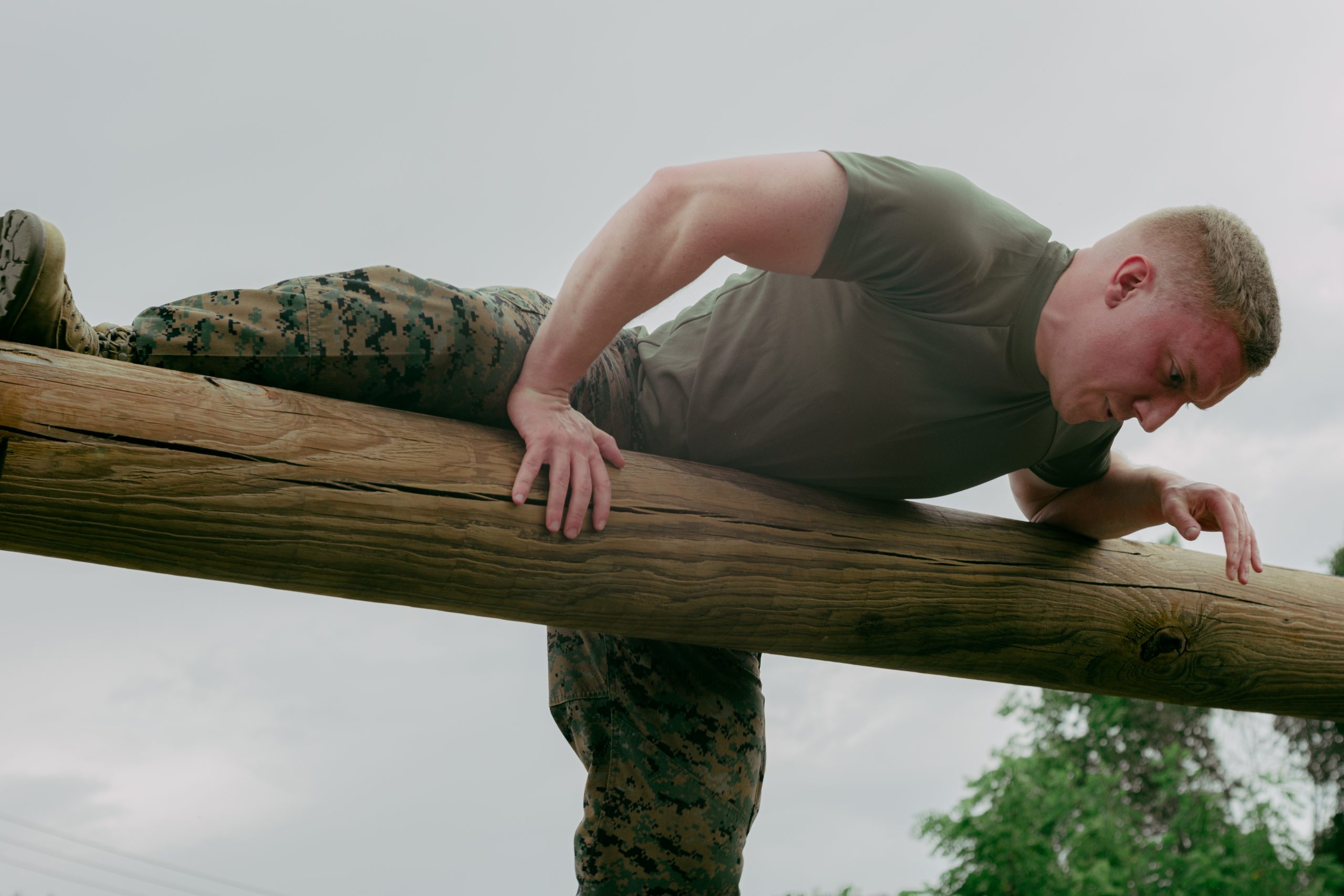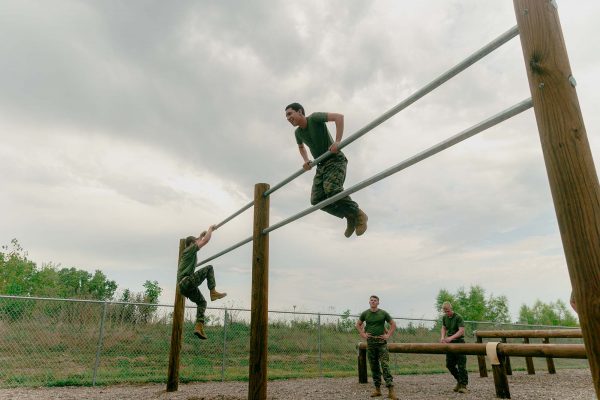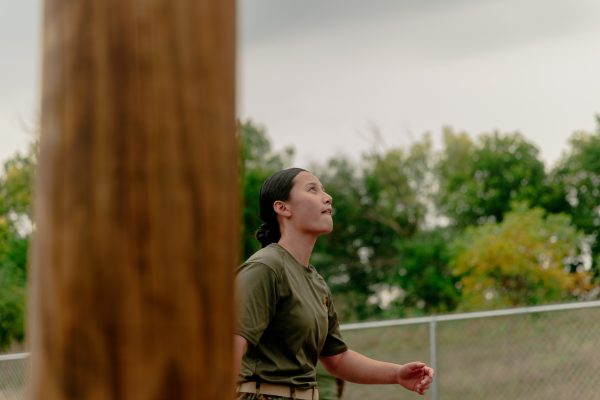
Iowa State’s 20 Marine-Option ROTC students line up behind the first of seven obstacles designed to test every muscle in their bodies. Whether they are excited or anxious is unknown. The fact is, they must conquer this course to achieve their dreams of becoming U.S. Marine Corps officers.
First up is a relatively simple task – spin their bodies around a single metal bar. Next, they navigate medium-high jumps over logs before tackling obstacles that demand both physical endurance and mental toughness, walking on uneven timbers 12 feet high in the air, and then scaling a 7-foot-high wall using only their hands and feet. More jumps over large logs and swings on metal bars lead to the course’s grand finale – climbing a rope that ascends 20 feet in the air.
The course is timed, so the students sprint from one obstacle to the next. A successful run should take less than 2 minutes for men and less than 3 minutes for women.
Even with their energy spent, the students repeat the obstacles, aiming to get better, stronger, faster.
Foundational support
The obstacle course was funded in 2022 by lead donor and Iowa State alumnus Rick Burnett Jr., Peachtree, Georgia. Hundreds of additional alumni and friends of Iowa State’s ROTC units also contributed to the project.
The obstacle course opened in 2023 just off State Ave. in Ames and is named the Lt. Col. Richard Burnett Sr. USMC Memorial Obstacle Course, in honor of Burnett’s father who lost his life at age 39 while serving his country. Iowa State’s course is one of only nine university obstacle courses in the nation and may be used by all ROTC students at Iowa State.
Captain Alexander Macki, Marine instructor at Iowa State, is responsible for the training, development, and mentorship of all the Marine-Option students – those seeking to be commissioned officers in the U.S. Marine Corps following graduation from Iowa State. Captain Macki says the obstacle course offers students much more than physical gains.
“Part of this training and what I portray to the kids is there is great value in coming out here and doing something hard together,” he said. “You build unit cohesion, boost morale, build your ‘espirit de corps’ – your spirit. It’s good for the mind, good for the body. That’s why I personally really love getting out here.”
All in

The Marine-Option students work out on the obstacle course four or five times each week, except during the winter months. Either Captain Macki or Assistant Marine Officer Instructor Staff Sergeant Tyrone Cameron are always present at the course when students are there, assisting them with techniques to improve their times or simply cheering them on.
All of Iowa State’s ROTC branches are welcome to use the course, and Captain Macki provides training and guidance for first-time users. But the Marine-Option students have more riding on their course performances. They must complete a timed obstacle course test during Officer Candidate School (OCS), a six-week training course that students need to pass the summer between their junior and senior years of college. To become a commissioned Marine officer, the students must earn their college degree and pass OCS. Having access to an obstacle course for training prior to OCS gives Iowa State students a leg up.
“There are not exact specs required for these courses, but this is exactly what they are going to see when they get to Officer Candidate School,” Captain Macki said. “Some of our stuff is a little on the taller end so some of the jumps are a little bit higher, which I think is great because if they master this thing and get proficient at this, they’ll get to Officer Candidate School and a have good surprise.”
Work on the obstacle course also prepares ROTC students for the National Drill Meet Competition held each spring. Last year, Iowa State placed second out of 10 teams in the competition.
“Competition breeds success. You put your sights on something. We divvy up all the teams and there’s a leader per team, so they organize their own practices, build their training plans,” Captain Macki said. “They took a lot of pride in their preparation and discipline, getting practices in on top of keeping up with their studies. It was cool.”
Competitive confidence

While the obstacle course is grueling and tests the fittest of individuals, ROTC students feel lucky to have this amenity at Iowa State.
Marine-Option student Hannah Upton (’26 aerospace engineering) has completed the obstacle course at least 10 times so far.
“I love running it. It’s so fun,” she said. “It builds that confidence, especially as a smaller individual. Sometimes you look at obstacles and you’re like, ‘Oh, I don’t even know if I can jump and reach that.’ But when you do [and you get that] feeling of ‘I was scared but I still jumped and did it.’ Nothing beats that.”
Next summer, Upton will attend Officer Candidate School, where she will attempt to complete the obstacle course in less than 3 minutes. She’s confident she will be successful, thanks to her training at the Iowa State course.
“I have confidence going in that I can actually do a full [obstacle] course. Not everyone is lucky enough to have that so I’m very, very blessed,” Upton said. “We are all very thankful to the Burnett family and to all the others who donated money to establish the course.”